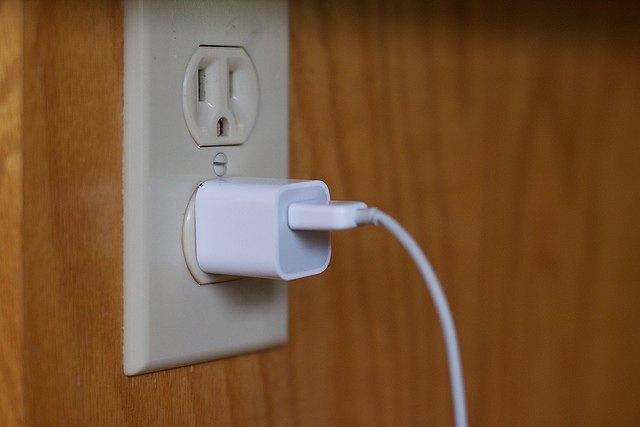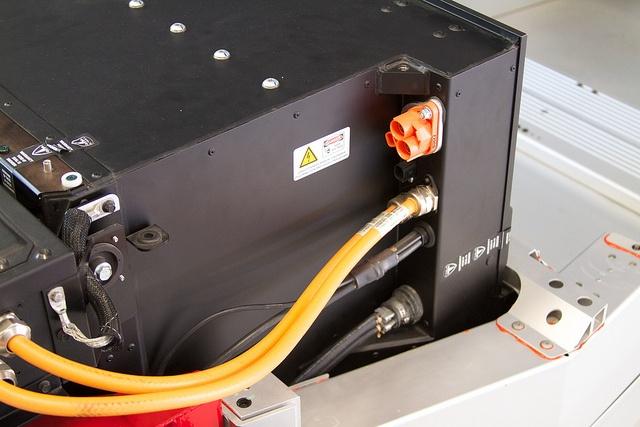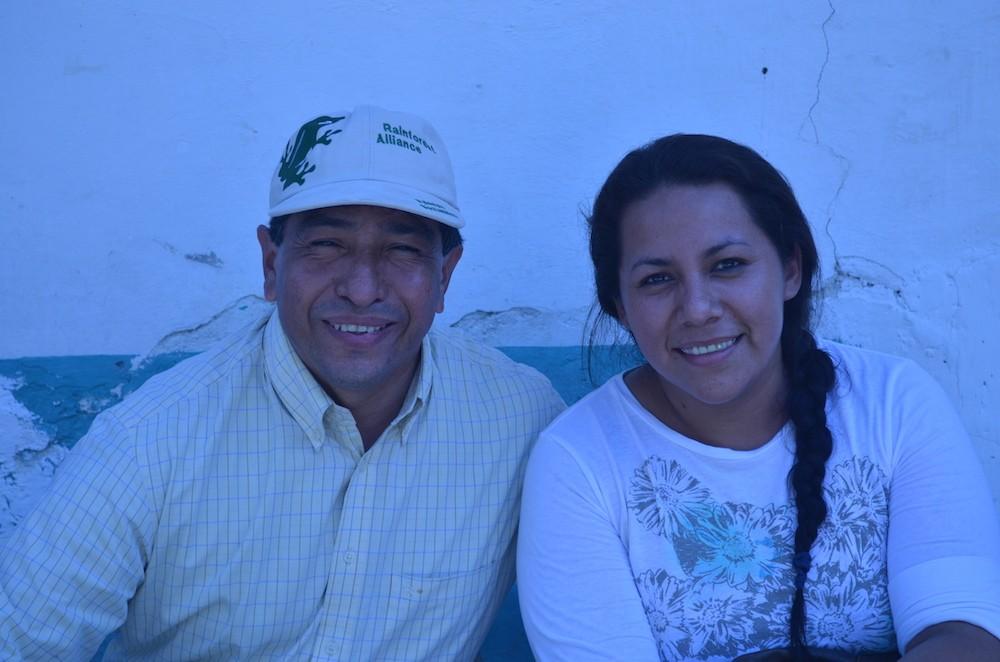In Search of the Sustainably-Sourced Guaranteed Lower Utility Bill


The sustainably-sourced guaranteed lower electricity bill is the true disruptive challenge confronting electric utilities and their regulators. Competitors are offering it. Utilities are not.
For example, customers in the approximately 10 states that currently enable economic net metering are buying solar systems through financial contracts that guarantee lower monthly utility bills. By 2016 the price of solar energy is projected to be equal to or even less than utility rates in all 50 states. The potential for customers to buy sustainably-sourced energy through contracts that guarantee lower monthly electricity bills could soon explode across the U.S.
Four global mega-trends bigger than the electric utility industry
Technology innovations, manufacturing economies of scale and shifts in consumer decision-making are four 21st century mega-trends reshaping every business. This global phenomenon is now slamming against the traditional electric utility business model. The electric utility industry’s ability to stop or retard these disruptions has a limited, and eroding, time horizon.
The specific 21st-century disruptions confronting the electric utility industry include:
- Global investments in solar, battery, LED and smart-building technologies are achieving manufacturing economies of scale that deliver the type of continuous price declines associated with computers and smartphones.
- Well capitalized competitors to the utility business model have emerged with business cultures focused on delivering guaranteed lower customer electricity bills.
- The 21st century Information Age has displaced the 20th century’s branded mass-marketing strategies. Consumer peer-postings in social media, rather than branded messaging, now drives what consumers buy, who they buy from and what price they expect to pay.
- The emergence of a consensus among mothers and the millennial generation that their health is at risk from 20th century industrialization. These key consumer segments are actively deserting brands that no longer align with their growing expectations for value and values. They are actively seeking and buying price competitive products that enhance human health.
How global mega-trends are disrupting the electric utility business model
The global mega-trends reshaping what consumers buy and who they buy from are now having measurable impacts on the historical utility business model. These impacts include:
- Utilities are losing value-alignment with their customers. Utilities do not have a competing product to customer-owned sustainable technologies packaged into financial contracts that deliver guaranteed lower electricity bills.
- Utilities are losing their values-alignment with their customers. Customers seeking sustainably-sourced products are increasingly able to buy home and office technologies that demonstrate their commitment to human and environmental health.
- Utilities are increasingly disconnected from their customers. Consumers now expect a social media conversation with the companies they do business with. Utility customers are increasingly bypassing utility messaging by using social media to harvest peer insights and to acquire issues-based learning through the comic wit of John Oliver, Jon Stewart and Stephen Colbert
- An emerging grassroots political coalition of strange bedfellows is challenging utility-centric regulation and legislation. Unlikely alliances like the one that emerged in Georgia between the Tea Party and environmentalists are challenging utilities at their commissions, state legislatures and the ballot box on the industry’s value and values.
If it is of any comfort to the electric utility industry, it does not stand alone in attempting to deal with these disruptive mega-trends. These same mega-trends explain why Chipotle displaced McDonalds as the most valuable restaurant chain in America. It explains why companies from Apple to Walmart are greening their supply chains and have adopted goals for operating their businesses with 100 percent renewable energy. It explains why 21st century business best practices are truly different compared to the 20th century.
"Cost less, mean more” defines business success
The electric utility industry, and its regulators, now confront a 21st century formula for business success. This new formula is to deliver “cost less, mean more” customer results. Market research is adamant that customers expect it all. They expect competitively-priced products that align with their values.
This 21st century business success formula contrasts with the traditional electric utility business model that too often is defined by annual rate increases, service interruptions and environmental impacts. The industry’s hallmark customer education programs and cash incentive promotions of energy-efficient technologies may be reaching a point of diminishing customer engagement. Customers question these programs and cash incentives when they fail to achieve sustained lower electricity bills as utility rates move higher. Utility cash incentive programs for energy-efficiency technologies or demand-response is losing competitiveness to customer-owned solutions that deliver sustainably-sourced guaranteed lower electricity bills.
This trend will only accelerate as customer-centric innovations merge to deliver the zero net energy (ZNE) building. ZNE buildings generate as much annual renewable energy as they consume through the design integration of onsite renewable energy, batteries, LED lighting, energy efficiency, collaborative living/work spaces, smart sensors and Internet-of-things management systems. The financial community is on track to introduce innovations that will finance ZNE buildings to deliver guaranteed lower electricity bills. California, the seventh largest economy in the world, has integrated ZNE into its building codes. Similar to what happened in solar, California will create consumer demand critical mass for ZNE. This will drive global manufacturing economies of scales that will move ZNE buildings to price competitiveness against traditional electric utility service.
Get weird: Deliver guaranteed lower bills or lose!
Ironically, at one time the electric utility was viewed as being weird or outside the business norm. During their first 50 years, utilities were a growth industry delivering annual electricity rate reductions through innovation. The electric utility industry, and its regulators, must rediscover the ability to get weird.
The path to being weird begins with leadership and culture. Having worked with utilities and solar companies, I can confirm their cultures are as different as night and day. Succeeding solar companies have a singular focus on innovations that drive down the customer’s monthly bill. They are consumed with a search for marketing innovations that will win customers. They are in constant dialogue on acquisitions or alliances that hold the potential for cost-saving economies of scale, financing innovations, customer growth and expansion of product offerings.
To remain competitive and relevant the electric utility industry, and its regulators, will need to place their focus on the sustainably-sourced guaranteed lower monthly electricity bill. An industry focus on rate re-designs that preserve revenues plus programs to shape consumer behavior around the industry’s cost curve do not align with customer expectations. The sustainably-sourced guaranteed lower electricity bill is emerging as the consumer electricity procurement-metric of the 21st century.
How to restore the electric utility’s mojo
Restoring the industry’s mojo by aligning with customer expectations on value and values is the path to achieving the industry's quest for revenue success. Finding this new mojo will require an issues-structured dialogue between utilities, regulators and stakeholders with the goal of surfacing public policy innovations that will align utilities with customer expectations.
To implement this new mojo, the industry will need to develop and/or acquire work associates capable of identifying and executing innovations that win customers. To communicate their new mojo, utilities will probably have to go through a humbling and frustrating learning curve to learn how to achieve interactive conversations with their customers via mobile social media. Their new mojo will inspire individual utilities to explore acquisitions and strategic alliances that enable the delivery of sustainably-sourced guaranteed lower electricity bills.
In summary: To win customers in the 21st century, the electric utility industry must get weird, or go outside its existing norms, in figuring out how to deliver a sustainably sourced guaranteed lower electricity bill.
Image credit: Flickr/Alan Levine
Detroit Zoo Raising Funds to Turn Animal Poop Into Energy and Fertilizer


The animals at the Detroit Zoo generate much poop, which is something that can be used to generate energy and fertilizer. That is why the Detroit Zoological Society and the Michigan Economic Development Corp. (MEDC) announced a crowdfunding campaign through Patronicity, a Michigan-based crowdfunding site. The campaign is to raise funds for a biodigester that will produce energy from animal manure at the Detroit Zoo.
The goal is to raise $55,000 by June 15, and if that is raised, the MEDC will provide a $55,000 matching grant. So far, $11,854 has been raised as of April 25.
The biodigester will turn 400 tons of animal manure generated annually at the Detroit Zoo into a biogas. In turn, the biogas will be used to help power the 18,000-square-foot Ruth Roby Glancy Animal Health Complex. Construction is slated to begin this spring and be completed in the fall. It will be the first biodigester used at a zoo in the U.S.
“The biodigester will turn one of our most abundant resources – manure – into energy, and represents a significant step on our green journey,” said Ron Kagan, executive director and CEO of the Detroit Zoological Society.
The biodigester will use anaerobic digestion, a process that breaks down plant and animal materials through micro-organisms. The process starts when biomass is put inside a digester. Micro-organisms then digest the biomass, which release a biogas that can be used to generate power and heat. Any remaining material will be used as fertilizer for animal habitats, gardens and public spaces throughout the zoo’s 135 acres.
“We are pleased to partner with the Detroit Zoo and support this eco-friendly, energy-saving project,” said MEDC Community Development Director Katharine Czarnecki. “This campaign will allow residents, businesses and everyone who appreciates the Zoo and the positive impact it has on Metro Detroit to be a part of this innovative undertaking.”
The biodigester will save the zoo $70,000 to $80,000 a year in energy costs. It will also help the zoo meet its goal to reduce carbon dioxide emissions from electricity and natural gas by 20 percent by the end of 2015. Both the emissions reduction goal and the biodigester are part of the sustainability initiatives of the Detroit Zoological Society Greenprint, a green roadmap guiding the zoo to be more environmentally friendly.
The sustainability efforts of the society were recognized with a Green Award in 2014 by the Association of Zoos and Aquariums. Last year, the zoo’s Arctic Cafe was recognized as a Three Star Green-Certified Restaurant by the Green Restaurant Association. It is one of only four restaurants in Michigan and one of only eight zoo restaurants in the U.S. to be certified green.
Image credit: Scott Calleja
Elon Musk and the Battery of Silent Revolutions


By Dr Raj Aseervatham
When I test-drove a Model S Tesla, I was quietly disappointed. Before you lodge a formal complaint, let me explain, because it is only a marginal disappointment.
It moved like a spaceship. Wait, I haven’t actually ever been in a spaceship per se. Not even Elon Musk's anything-you-can-do-Branson-I-can-do-too rocket. But I have watched enough space movies to know that once we’re in space it’s notably quiet.
When I depressed the accelerator (acutely aware that the term ‘hit the gas’ was now redundant), external surroundings moved with startlingly immediacy from the front of me to the back of me, which was the most significant clue that I was moving. The car dealer in the seat next to me also twitched a bit, which was my second clue that we were attaining commendable velocities instantly. It brought a smile to my face. It doesn’t take much to please me.
And while it falls considerably short of making a full light-year on one tank of electrons, the top-range battery allows distances of 500 kilometers (more than 300 miles) at a respectable pace without refueling.
But there was no throaty roar, so I felt nothing like Steve McQueen, Michael Schumacher or Daniel Ricciardo. Therein lay my disappointment.
Still, it’s all good because I was told by the dealer -- in response to my subsequent whining -- that I could soon get an app on my phone that simulates a throaty roar. Its throatiness is correlated to the Bluetooth-communicated meters-per-second-squared of acceleration. Its pitch is calibrated to an F1-snarl or a Lamborghini growl (or anything in between). The result is pumped through the speakers that Elon Musk reportedly required to be able to ”crank up to 11." Problem solved.
For pedestrians, who may not have this app, encountering a Tesla is a bit like being stalked by a Stealth fighter. A pearly white Model S slunk up behind me at the Gold Coast a few weeks ago. I noticed it a millisecond after I stepped off the curb in front of it. The driver nearly soiled himself as I hastily avoided the dubious honor of being the first martyr to Sexy-Sustainability-on-Wheels -- which would have been unsustainable for me, and therefore would have dented Elon’s claims regarding net gains, not to mention the shell of the delectable car.
Clean cars, dirty energy?
I am happy that car manufacturers like Tesla are focusing on transforming electric vehicles from pottering, distance-challenged, Noddy-like contraptions to Maserati-styled land-sharks. Even if the chassis of the Model S looks just like a massive slab of hundreds of strapped-together batteries covered in a smooth molded shell, and the car currently costs about as much as the quantity of 10-dollar notes you can cram into said chassis, it’s still a pretty good advance of technology.
Yet it’s not all silent applause. Because, obviously, the electricity used to charge these now-sexy machines can come from some grimy sources.
In some places, you’re ecologically better off driving an unsexy hybrid than a curvy spaceship-inspired electric vehicle. And that’s because burning some petrol in your combustion engine is better than burning the brown coal in the regional power station to get the electrons into your whopping electric battery. Here’s an example from the U.S.
Don’t get me wrong. I mean, it’s a giant step for a man to (almost) mainstream commercialize Top Gear performance electric vehicles, and it’s a small step for mankind to have a worthy receptor of clean energy that gets you from A to B and back so quietly. So kudos all round, say I.
Now we just need to get that clean energy delivered.
Tesla gets into the energy storage game
But Elon Musk, who is being compared to Tony Stark of Iron Man fame, is ahead of me.
He is not just a producer of cars. Following some mysterious Tweets from the industrialist early in April about the unveiling on April 30 of a product sans wheels, and the feverish speculation that followed, he is, apparently, poised to become a producer of batteries.
Now, lest you unkindly depreciate his personal brand by comparing him to an Energizer bunny, let me tell you that being a producer of batteries now has Messianic credibility. Because, as you will already know, having cheap batteries that can save large amounts of energy for long periods of time makes you a game-changer. And this is because we now have a wee chance at properly plugging in to our solar system’s ultimate power station, which delivers abundantly clean energy to your rooftops.
This, of course, leads us to the warmly sustainable position of your house soaking up some rays through its solar panels (yesterday's news) and becoming a battery (today's news), or your community becoming a bigger dynamic battery (tomorrow's news). Your house charges up your car any time of the day or night, which then charges silently through your suburban streets and interstate highways -- below the speed limit, of course.
We may already be there. Bloomberg reports that Walmart claims 11 of its stores in California are now installed with Tesla batteries. As you and I both know, the average Walmart store is far larger than the average home and runs a far greater number of electrical appliances. So, now it's just a matter of cost versus scale.
On this trajectory, big power stations become less relevant: We pull down some poles and wires and we decentralize our power supply-versus-demand characteristics.
It’s called a disruptive technology.
In a very quiet package.
Sneaky, Mr Musk. I cheer you in appropriately hushed tones.
Image credit: Flickr/Windell Oskay
Dr Raj Aseervatham is a driving enthusiast and a social and environmental professional who has worked extensively in Asia, Africa, Europe and the Americas on corporate responsibility and sustainability programs for government, consultancy and private industry.
Three-Point Strategy to Tackle Public Trust: Why It Matters


By Elisabeth Comere
When the Edelman 2015 Global Trust Barometer was released in January, one thing became abundantly clear: Consumer trust, or lack thereof, will force industry and businesses to rethink the way they practice sustainability.
Edelman’s Canadian Findings show that overall public confidence in business has hit a five-year low, sitting below 50 percent. In addition, 53 percent of respondents believe businesses fail to contribute to the greater good, and perhaps more telling is the belief held by 75 percent of respondents that the driving change in business and industry today is greed and money as opposed to a desire to improve people’s lives and make the world a better place.
These results have major implications for those of us pushing sustainability agendas within our companies and to our customers. Trust is the cornerstone of an effective sustainability strategy. The study, however, suggests that globally companies are losing trust by underperforming in two key areas: integrity and engagement.
Skepticism on the sustainability front is a warning called out in the 2015 State of Green Business Report. It suggests that that corporate sustainability targets will be questioned and higher targets will be demanded; businesses will be urged to work in collaboration with partners to address pressing social and environmental challenges; and consumers want to see businesses and government work collaboratively to shape policies that will accelerate the transition to low-carbon and more sustainable economy.
Three-Point Strategy to Tackle Public Trust
1. Integrity: Establish well-rounded sustainability priorities
Sustainability agendas and priorities must be created within the context of the company’s business, products and supply chains to see transformational change across all networks. This not only recognizes a major shift in the marketplace, but it also supports the business case for establishing sustainable business practices and credibility in public and private arenas. See Purdy’s Chocolatier, a trusted Canadian brand that has been committed to “going green” since the 1960s. In recent years, the sustainable cocoa industry has evolved allowing Purdy’s to produce sustainably sourced chocolates through their Sustainable Cocoa Program, a program dedicated to sustainable farming and sustainable living in communities in which they operate.
Against a backdrop of a rising global population, emerging economies, climate change, finite natural resources, increasing regulations and societal expectations, integrity is about ethics and owning successes and failures, and radical transparency. As a result of the internet, user-generated content, peer-to-peer networks and data leaks, this is the new necessity for practicing sustainability.
Businesses that are not walking the talk are risking their reputations and customer retention, ultimately baring negative effects on long term growth. Eventually, and without reprioritizing corporate commitments and responsibilities, not only will companies face public scrutiny, but they will spend more time and resources defending their corporate image. Even with rebranding and crisis communications strategies in place, it may be too late and too long a recovery process of repositioning one’s brand and regaining public confidence again. The stats below demonstrate that trusted companies have more to gain from placing sustainability at the forefront of their business model. Not only does it increase market share, but it can position a company as a thought leader in the sustainability realm offering longer term benefits (e.g. increased customer loyalty and sales, user-generated shares through peer-to-peer networks; every public relations and marketers dream). The key takeaway is, consumers are willing to spend more on quality products and services that are produced by transparent and responsible companies.
2. Engagement: Include stakeholders in the innovation process
Building trust is also about the ability to have the right collaboration to drive engagement for a shared vision. We cannot change the world by ourselves however, by working in collaboration with civil society, customers, peers and government, we can create shared value. One organization that demonstrates this point well is the Carton Council of Canada, a non-for-profit group of competing carton packaging manufacturing companies that have come together to advance sustainable recycling solutions in Canada to divert cartons from landfills.
Continued success depends on gathering support from peers; understanding, adapting to and addressing challenges; seeking to lead by example; and inspiring many stakeholders to join together to find effective solutions.
In addition, we need to establish a structured and consistent way of gathering feedback from customers, key stakeholders and employees, and make sure this knowledge feeds into the risk management and decision-making process. By respecting their interests, listening to concerns, and having an open and honest lines of communication, it can spur innovation, effective solutions and sustained market growth.
3. Transparency: Share and report your progress
Placing integrity at the core of your business requires openly sharing your strategies, practices and progress to-date with stakeholders on a regular basis and in an engaging way. This is a testament to an organization’s accountability not only for its actions on sustainability, but also for its shortcomings.
Loblaws, Canada’s largest food retailer, was one of the first to publish their CSR Report in corporate Canada, and has continued to put forward their track record, successes and shortfalls since 2008, and as such, they continue to position their company as a trusted brand.
Silence is a breeding ground for skepticism as key opinion leaders and consumers have an abundance of user-generated content at their fingertips that influences their opinion of your company and its practices. Every year, companies need to map the sustainability issues of greatest relevance to their business and of most interest or concern to their stakeholders to ensure their efforts maximize both impact and resonance.
Image credits: 1) Edelman 2) www.613style.com 3) Carton Council 4) www.ottawafoodbank.ca (Featured image: Flickr/purplejavatroll Elisabeth Comere is responsible for environment at Tetra Pak – the world leader in packaging and food processing solutions. She joined the company in 2006 as Environment Manager for Europe where she helped define and drive Tetra Pak’s environmental strategy and contributed shaping recycling for cartons in Europe. Since 2010, she is based in the U.S., focusing on advancing the Tetra Pak’s commitment to sustainability in the U.S. and Canada and is involved in various industry and customer packaging and sustainability initiatives.
Twitter Chat RECAP: Meet Yum! Brands at #3pYumChat


Today, Yum! Brands and TriplePundit hosted a special Twitter Chat about its environmental commitments – at #3pYumChat.
The sustainability experts at Yum! Brands - Roger McClendon, Chief Sustainability Officer and Laurie Schalow, VP of Corporate Social Responsibility, both engaged with TriplePundit on Twitter to address the company’s goals, successes, and opportunities for global sustainability.
The parent company of Taco Bell, KFC, and Pizza Hut reports annually on its CSR performance, which it views as key to creating positive change. The four strategic pillars for Yum! Brands within CSR are: food, people, community and environment.
During this chat, we focused on the environmental pillar. We learned about how Yum! Brands is an environmental steward, and has created three global iconic brands that people recognize and trust.
A few topics discussed included:
- Green buildings
- Waste recovery and recycling
- Energy efficiency
- Roger McClendon — Chief Sustainability Officer, Yum! Brands
- Laurie Schalow — VP of CSR, Yum! Brands
- Nick Aster (@NickAster) — TriplePundit Founder and Publisher
- Marissa Rosen (@MarissaR1) — TriplePundit Director of Social Media
- Jen Boynton (@JenBoynton) — TriplePundit Editor-In-Chief
General Mills Tracks Its Impact Across the Value Chain


General Mills is such a large company that when it does something, good or bad, you take notice. In this case, General Mills is striving to do good for the environment by reducing its greenhouse gas emissions.
It reduced its GHG emissions rate by 23 percent last year from a 2005 baseline, surpassing its goal of a 20 percent reduction by 2015. The company also managed to cut absolute GHG emissions by 10 percent since 2005 while net sales increased by 59 percent.
Becoming more energy efficient in its operations and using less GHG-intensive forms of energy are the focus of its emissions reduction efforts, as its 45th annual Global Responsibility Report reveals. The company provided several examples. One is its Murfreesboro, Tennessee, facility where an anaerobic reactor uses self-renewing bacteria to convert the whey by-product from Greek yogurt into a biogas. It may sound unconventional, but this biogas has the potential to generate over 10 percent of the power used at the facility and reduce natural gas use by 10 percent.
Going up the value chain
Most of the GHG emissions associated with General Mills’ value chain are from entities the company doesn’t own or control. Over 60 percent of its value chain emissions come from agriculture, ingredients and packaging. So, General Mills is focusing on sustainably sourcing its 10 priority ingredients by 2020. These 'priority' ingredients include vanilla, palm oil and sugarcane, and they represent over 50 of the total ingredients the company buys.
General Mills' goal for palm oil is to source 100 percent from “responsible and sustainable sources” by 2015. It is bit behind to meet the goal as 83 percent of the palm oil purchased in 2014 was sustainably sourced. Most palm oil comes from Malaysia and Indonesia, and in both countries the palm oil sector is responsible for deforestation.
The areas where General Mills lags behind
In some environmental areas General Mills is not slated to meet its 2015 targets. One of those areas is energy use reduction. The company’s goal is to reduce its energy usage rate by 20 percent by 2020 from a 2005 baseline. Through 2014, it only managed to reduce energy usage rate by 10 percent, unchanged since 2013. It attributes the stagnation to “stronger growth in relatively high energy products, such as Greek yogurt.”
General Mills does focus on increasing energy efficiency, and if it continue to focus on it, combined with increasing renewable energy use, it will eventually reduce its energy usage rate. Case in point: Its facility in Inofita, Greece, installed nearly 800 square feet of solar panels in 2014, reducing diesel consumption related to water heating. The solar panels also decrease related GHG emissions and are projected to save about $50,000 a year. The solar energy system is also projected to pay for itself in two years.
Another area that General Mills lags behind is transportation fuels reduction. The company aimed to cut fuel usage rate by 35 percent by the end of this year, using a 2009 baseline. It has only reduced this rate by 22 percent through 2014, compared to 24 percent through 2013. The reason for the slow progress is due partly to winter storms in 2014, the company said. Since transporting products is a “significant source of GHG emissions,” General Mills needs to step it up in this area.
Still another area that General Mills lags in is water use reduction, but only by a little bit. The goal is to reduce water usage rate by 20 percent by 2015, from a 2006 baseline. The company achieved a 17 percent reduction in 2014. There are several reasons the company is lagging: high water usage in yogurt products and associated cooling systems following its Yoplait acquisition in 2012 combined with expanding its Greek yogurt business, the company said.
It will be interesting to see where General Mills is next year. Will the company achieve more progress toward its environmental goals? Stay tuned to find out.
Image credit: GeneralMills
Unilever scales up ambition to make sustainable living commonplace


Unilever is furthering its ambition to make sustainable living commonplace by partnering with global sustainability movements Global Citizen and Live Earth: Road to Paris.
This is the first time that the FMCG giant has partnered with two global movements on this scale through its Unilever brightFuture campaign, which will encourage action amongst consumers towards a more sustainable future.
Paul Polman, ceo, Unilever said: “2015 is a critical moment in time, an opportunity to agree on a universal agenda that tackles poverty and inequality and to all take action to protect the one planet we have. As a business we can deploy our resources, expertise and scale to help our consumers to take action. Today, we are adding our support for the growing movement of citizens and businesses demanding change.”
Planned activity includes encouraging climate-conscious people to sign the “Take Climate Action Now” pledge and helping to build the world’s largest, most effective social activism campaign to help address global sustainable development.
For full details see the May issue of Ethical Performance.
Picture credit: © Pixbox77 | Dreamstime.com - Plant The Tree For Stop Global Waming, Sustainable Photo
Tesla is Taking Its Batteries Off the Road -- and Putting Them in Business


In a nifty turn of reverse marketing, luxury electric vehicle maker Tesla Motors aims to make its cutting-edge mobile battery technology a workhorse for the stationary energy storage sector. Bloomberg News reported that Tesla will introduce batteries for commercial and residential use this week, following through on a promise company CEO Elon Musk made earlier this year.
For those of you familiar with Mr. Musk, the move is no big shocker. Musk is also chairman of the leading U.S. residential solar installer SolarCity, which is already offering Tesla-branded batteries to its rooftop solar customers. The new announcement could break the energy storage market wide open into non-solar customers as well.
Why invest in energy storage without solar energy?
The question for business is: Why would you invest in on-site energy storage if you don't have an on-site solar array?
After all, the main reason to pair a battery with solar panels is to store energy when the sun is shining, so you can still get zero-emission electricity at night or during inclement weather. And to be clear, the new Tesla venture seems aimed primarily at storing solar energy.
However, additional benefits of energy storage are emerging that apply across all properties, with or without on-site solar (or, for that matter, on-site wind turbines).
Foremost is the rise of the demand-response model for grid electricity rates. Utilities have been adopting more pathways to help customers ease off their electricity use during peak hours, and energy storage plays a pivotal role in this trend.
The attraction for business is that you can shave down your electricity costs by charging up your battery and storing energy during scheduled off-peak hours, when rates are lower. To avoid brownouts and other disruptions, utilities are also beginning to use smart grid technology to request demand cutbacks on the fly, so businesses with energy storage will be able to take advantage of those incentives as well. Reducing the need to build expensive new "peaking" plants is another plus for utilities.
Another strong benefit is the ability to rely on a quiet, zero-emission source of electricity in case of power outages, rather than having to rely on a noisy diesel backup generator.
The backup benefit is becoming more urgent, as a warming global climate has contributed to an increase in the risk of grid outages from damaging storms.
It's also worth noting that in the health care sector, the trend toward in-home and clinic-based care will bring about an increase in the need for small-scale backup power systems to keep medically necessary equipment running, in addition to simply keeping the lights on.
Domesticating the Tesla electric vehicle battery
Despite its relatively short history in the automotive field, Tesla has already become known for its high-end, high-tech, high-performance engineering.
That reputation applies especially to the company's long-range, lithium-ion electric vehicle battery and its growing network of super-fast charging stations.
All that cutting-edge technology comes at a cost, of course. While Tesla has been trying to broaden its customer base with more attractive financing and the introduction of more affordable vehicles, the company's signature Model S is too pricey for most car buyers.
You might assume that a similar obstacle would apply to Tesla's new stationary battery, but you might be wrong about that.
As reported by Dana Hull of Bloomberg News last week, Tesla has been quietly working with California's SGIP, the Self Generation Incentive Program, to procure rebates for its stationary batteries at scores of sites throughout the state.
Hull puts the figure at more than 100 projects for Tesla, which is pretty impressive when you take a look at SGIP's overall record.
SGIP launched in 2001 as a means of smoothing out spikes in energy demand across the California grid, and it recently reported that to date it has 544 projects under its belt.
When the program started it had an integrated solar component, but in 2006 the solar aspect was farmed out to the California Solar Initiative. That's partly why we're guessing that Tesla's close relationship with SGIP could help propel the market for on site energy storage, with or without on site solar.
Energy storage market is mushrooming
Building on its recent work with SGIP, Tesla has also been taking steps to position itself for new growth in the California energy storage market, as indicated by a December 2014 workshop in which the company proposed a low-cost alternative for interconnection in PG&E territory.
Last week, Bloomberg's Dana Hull reported that utility-scale energy storage is also in the works for Tesla.
The company already has Wal-Mart and Cargill in its stable. Schools, factories, and wineries in California are also likely targets for large-scale batteries.
Helping things along, according to Hull, is a potential pile of $65 million in SGIP rebates for Tesla projects.
Tesla is expected to make a public announcement about its stationary battery sales program on April 30, so stay tuned for more details.
Meanwhile, Hull reports that energy storage investment in the U.S. is expected to surge more than 10 times over the current rate by 2019, adding up to $1.5 billion.
The takeaway: Businesses that invest in energy storage will have a leg up on the competition when it comes to bottom line electricity costs as well as energy security, especially when paired with on-site solar or wind power.
Image credit (screenshot): Courtesy of Tesla Motors.
The Patron Saint of Petén


José Román Carrera stands about 5 feet 6 inches tall and speaks matter-of-factly, even casually, about the 82 death threats he has received over his 23-year career trying to protect his country’s greatest natural asset. It’s the same tone I might use when ordering a sandwich in a deli. When I asked him if he was scared, he quickly exclaimed with a smile, “No, my life is a gift!”
Indeed, conservation may be one of the most dangerous jobs in Latin America. Workers and community members are subjected to threats of violence for speaking out in favor of conservation. In Guatemala, "there is always a fight between the people and corruption," one member of the media told me. Threats might come from lackeys of government officials, business interests or drug traffickers -- anyone who thinks they could benefit financially from the land and natural resources.
On Friday April 17, a joint task force arrested 21 high-ranking members of the Guatemalan government for involvement in a multimillion-dollar tax fraud scheme that captured 60 percent of customs taxes that should have been collected between 2014 and 2015.
With this background of corruption, it is no surprise that the Maya Biosphere reserve, the largest rainforest in Central America and a global treasure of natural resources, is at extremely high risk of being chopped up and sold to the highest bidder.
The Maya Biosphere reserve, 6 million acres and over 10 percent of the land mass of Guatemala, sits in the northern state of Petén. The reserve was established in 1990 by the Guatemalan government and UNESCO to safeguard the region’s biodiversity and cultural significance. In addition to millions of acres of rainforest, the region also includes Tikal National Park – a site of Mayan ruins which was hidden in the jungle for over a thousand years and was declared a Natural and Cultural World Heritage site in 1997.
This area is also home to oil reserves and other natural resources that are ripe for corporate exploitation. The reserve abuts Mexico’s southern border, which means the region is also a popular stomping ground for drug cartels who slash and burn illegally to clear land for secret trails and to make space for their plentiful cattle herds – a money laundering scheme that they use to hide their illegal drug profits by funneling them through illegal-but-tolerated slash-and-burn grazing.
Despite the odds, one man and his colleagues at the Rainforest Alliance are working to keep the Maya Biosphere reserve protected over the long term. Their plan involves turning the impoverished families and small communities who have lived deep in the jungle for hundreds of years into a network of producers of sustainable forestry products. It’s an audacious plan for sure. Can it withstand political corruption corporate interests and drug traffickers?
Román Carrera spends his time traveling between the 182 collectives he supports for the Rainforest Alliance all over Latin America. He tries to visit each collective three times per year. But his heart, and a concentration of 102 collectives, lie in the Petén alongside the Maya Biosphere Reserve.
Román Carrera was born and raised as one of 10 children, the son of a subsistence farmer in the Petén. He was the first child in his family to attend school, a considerable undertaking given that the closest elementary school was a 6-kilometer walk through the jungle. “I knew I wanted to attend school because I wanted to be a professional and help my community. My father was a farmer, and the economic situation was difficult.” His daily walks under the forest canopy solidified his love of the forest and desire to protect it.
Román Carrera’s knowledge runs deep. Stand in place with him in the jungle, hundreds of miles from the nearest convenience store, and he will point out its many resources, all within arms’ reach. “This is the all-spice plant; this tree is mahogany; here are the xate [an ornamental plant very popular in Western flower arrangements]; here is the ramon nut [a nutritious Mayan nut with an edible skin beloved by the howler monkeys who live nearby].” It is these resources that Román Carrera seeks to develop with the assistance of a network of sustainable forestry collectives.
This plan is complex.
Guatemala's poverty rate is high -- 54 percent of the population lives below the poverty line, and the country suffered a 36-year civil war which ended in 1996. Many citizens have family members and friends who were killed during the war. The Gross National Income per capita is only $3,340. For those citizens living deep in the jungle, income opportunities are few and far between and largely consist of either slash-and-burn for farming or selling timber. Providing people with sustainable alternatives serves twin goals of economic and environmental protection.
Román Carrera’s plan to save the rainforest includes the many rural residents who call the Petén home. One by one, he has engaged with these communities, driving hundreds of kilometers over dirt roads, some of which are only accessible in the two-month dry season. He meets these groups and hears their stories. He describes for them how they can earn money through Rainforest Alliance certification collecting timber and non-timber products from their local woods. The rest is a continual work-in-progress to improve the members’ leadership and organization skills, help them add value to their products, reduce waste in the value chain and maximize profit while tending to the rainforest.
For example, the Carmelita collective was founded in 1997 and is currently home to 380 people, many of whom are direct decedents of chicle collectors who used to collect the sap-like product by hand when it was a common ingredient in gum. Fifty years ago, it was only possible to reach Carmelita by plane – there were no roads. Today it takes a plane ride from Guatemala city and a three-hour drive in a four-wheel-drive vehicle to reach the community. The collective supports itself by collecting timber, carefully selecting which trees to fell based on purchase orders.
Their certification mandates that they can cut only two trees per hectare in the sections of their land that are under active management. Each tree is carefully mapped and matched to ensure chain of custody control that commands a higher price. “Around the world this is a warrantee that the wood is protected,” Román Carrera explains. Each of these sustainably harvested trees can earn the community as much as $3,300. The 356 trees the community cut last year provided 70 percent of the community’s income; the rest comes from non-timber products, tourism and value adds, like drying and treating lumber to command a higher price. The community is self-organized and uses profits from these activities to fund schools, offer scholarships, provide health clinics and anything else the community needs.
Carmelita is a success story but Román Carrera has been able to replicate it throughout the region with a careful combination of listening and marketing skills. When I ask him how he gets a new community off the ground in a country where he has no contacts, he chuckles and says “ It’s easy! I go in and say do you want to make more money? I bring them buyers who are interested in certified products. It’s marketing.” When new collectives are in development, Rainforest Alliance pays for leaders to travel to Carmelita or another successful collective to learn how to self-organize.
Román Carrera’s passion only begins with biodiversity. Out and about in the community, everyone we encounter is thrilled to see him and offers an update on how their families are doing. He and his wife, Anita, provide scholarships each year to bright and motivated children from the Petén region to receive advanced training and education. The couple looks for students who are poor, at the top of their class, and always choose a boy and a girl to make sure that women can become future leaders in their communities. Students study forestry, biodiversity or get other training like nursing and carpentry which can benefit the community. “Ultimately we want to provide at least 20 scholarships per year. Education is the way out. Education is the way to make big changes,” he explains.
When we visited an elementary school in the region, many children recognized Román Carrera and ran over for hugs. As he rustled the hair of a two boys, he noticed their heads had small bald patches and the scalp was inflamed. “This does not look good,” he whispered to me. “I’m going to make sure they get to the doctor.” And he walked off to arrange for the boys to get medical attention.
For right now, Carrera is happy with his job, especially all the chances it offers to get out into the rainforest. “When I visit, I love to spend a night or two and even sleep outside.” But he recognizes that Guatemala’s unstable government could easily chip away at all he’s built if the wrong leader gets into power.
Each political cycle, “I get invited to participate in politics. Every time this opportunity comes around, I have this conversation with my wife [about whether I should run or not]. If I could eliminate corruption, I would give up this life I love. I love to work here, but if you can do it to another scale, it is better.”
Román Carrera concedes that becoming a more public figure would be dangerous. In this political climate, public statements in support of rainforest protection could easily get him killed. But he thinks his work and the work of the Rainforest Alliance and other activists is worth more than his life. “They can kill one, but they can’t kill us all.”
Image credits: Jennifer Boynton
Travel and accommodations in Guatemala were provided by Rainforest Alliance; this story is editorially independent and opinions are my own.
SCOTUS to Foreign Victims of Corporate Human Rights Abuse: Stay Away


Last week, the U.S. Supreme Court declined to hear plaintiffs’ appeal in Cardona v. Chiquita Brands International, a lawsuit brought by victims of terrorism and crimes against humanity in Colombia. With barely a word, the high court squashed any remaining hopes for justice for the families of the more than 4,000 victims of paramilitary violence during the Colombian civil war. The Court may also have, once and for all, shut the door to the American courts for individuals harmed by American corporations abroad.
Recap of the Chiquita suit
As I wrote here earlier this year, Chiquita plead guilty in 2007 to funding the Colombian paramilitary -- and former terrorist -- organization, the Autodefensas Unidas de Colombia (AUC) (United Self-Defense Forces of Colombia), and other guerrilla groups during Colombia’s brutal civil war. Although Chiquita has maintained that the illegal payments to the AUC were extorted, documents obtained in 2013 by George Washington University’s National Security Archive showed that Chiquita had in fact hired the AUC for the explicit purpose of providing security for employees of its Colombian subsidiary.
Following Chiquita’s settlement with the U.S. government, family members of individuals harmed by Colombian paramilitary groups during the civil war used the now-controversial Alien Tort Statute (ATS) to sue Chiquita in U.S. court. The plaintiffs claimed that Chiquita’s payments to the AUC and other groups contributed to extrajudicial killings, torture, forced disappearances, crimes against humanity and war crimes committed by Colombian paramilitaries.
In 2011, the 11th Circuit Court of Appeals threw the case out, holding that, following the Supreme Court’s 2013 decision in Kiobel v. Royal Dutch Petroleum, the “ATS does not apply extraterritorially” (meaning, more or less, that U.S. courts will not hear cases involving conduct that only occurred abroad). As I pointed out in my previous coverage of the Chiquita case, the 11th Circuit’s interpretation of the Kiobel decision was extreme and at odds with a recent articulation of the law by the 4th Circuit Court of Appeals in Al Shimari v. CACI. There, the 4th Circuit held that, where individuals in the U.S. approved conduct that violated international law abroad, victims of that conduct could use the ATS to sue the individuals who approved it (or their employer). In other words, the precise factual situation presented in Chiquita.
What the Supreme Court’s refusal means
This fundamental disagreement between the 4th and 11th Circuits is an indication of the ambiguity that has surrounded the Supreme Court’s Kiobel decision since it came down in 2013 -- an ambiguity which led many legal experts to believe that the Chiquita case was likely to make the Supreme Court’s docket. Unfortunately, the highest court in the land and the arbiter of these disputes did not agree.
Thus, without the Supreme Court stepping in to clarify, the lower courts are left to simply guess at the Court’s real meaning. By denying to hear the appeal in Chiquita, the Supreme Court is sending the very dangerous message that the 11th Circuit had it right.
Why it matters
Prior to the Supreme Court’s denial in Chiquita, William Dodge, an international law professor and former adviser to the State Department, told the New Republic, “If there is any corporate case in which the Supreme Court is going to allow suits under the ATS, it’s going to be this one.”
This is precisely why the Supreme Court’s ignoring Chiquita and the underlying disagreement in the circuits is so frightening. As the New Republic framed it: “Chiquita made what its own legal counsel called a ‘business decision’ to finance horrendous violence. If the Supreme Court doesn’t set a precedent now, there’s no reason to believe other companies won’t do the same in the future.”
By passing on the Chiquita case, the Supreme Court’s tacit message to U.S. corporations is: So long as all you do is provide the financing for the commission of horrible crimes, you cannot be held accountable in America. Or, as EarthRights International (ERI), counsel to some of the Colombian plaintiffs in the case, summed it up in a headline: “Supreme Court Allows U.S. Corporation to Finance Terrorism Without Accountability.”
ERI’s press release described the story of “John Doe 9,” the husband of one of the Colombian plaintiffs, who was a labor leader in one of the banana-growing regions. According to the plaintiffs’ complaint, the AUC -- funded in part by Chiquita -- “detained, tortured, killed and dismembered John Doe 9 in retaliation for his union activities.” John Doe 9’s death inured to Chiquita’s benefit by “removing a labor activist who threatened the stability and profitability of Chiquita’s operations.”
Whether Chiquita should be held liable for these and other brutal crimes committed by paramilitary groups in Colombia is not, ultimately, the most pressing question here (though it is one that the Supreme Court implicitly answered in the negative). The more important question, rather, is: In what forum can foreign victims of corporate human rights violations and their families seek justice? Here, too, the Supreme Court answered without answering: not in America, so probably nowhere.
Colombia’s justice system has been called a “multi-headed behemoth in bad need of reform,” where, as in most post-conflict states and those where gross human rights violations are most likely to be committed, the rule of law is weak. Access to justice for victims of the civil war is virtually nonexistent, despite a 2005 law that contemplated the special prosecution and sentencing of former paramilitary members. According to the work of the International Center for Transitional Justice, “[b]y June 2013, approximately 2,000 former paramilitaries had passed through the Justice and Peace tribunals, but only 14 had been sentenced.”
In other words, impunity prevails. This, despite the fact that, from time to time, U.S. corporations are complicit in the commission of human rights violations around the world (as is most certainly the case with Chiquita in Colombia). Unfortunately for the victims and their families, the Supreme Court appears to be shutting them out of American courts. In other words, they’ll have no better luck here than in Colombia.
Image credit: Flickr/CIAT